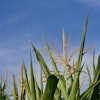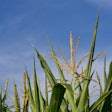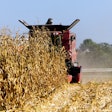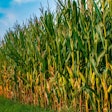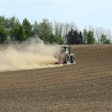
The U.S. Department of Agriculture's latest crop production report forecasts winter wheat production at 1.38 billion bushels for 2025, a 2 percent increase from 2024. This uptick comes despite a slight decrease in harvested area, driven primarily by improved yields across several key producing states.
The national yield is projected at 53.7 bushels per acre, up 2.0 bushels from last year's average of 51.7 bushels. California is expected to achieve a record high yield, contributing to the overall production increase.
Area expected to be harvested for grain is forecast at 25.7 million acres, down 1 percent from last year. Producers anticipate harvesting 77 percent of the planted acres for grain. Virginia is projected to have a record low harvested acreage.
As of May 4, 51 percent of the winter wheat acreage in the 18 major producing states was rated in good to excellent condition, slightly higher than the same time last year. The crop's development is ahead of schedule, with 39 percent headed by May 4, six percentage points ahead of the five-year average.
In Kansas, the largest winter wheat producing state, 47 percent of the crop was rated in good to excellent condition as of May 4.
The report also highlights production forecasts for other wheat varieties. Durum wheat production in Arizona and California is projected at 6.77 million bushels, down 23 percent from last year, with acreage intended for harvest in these two states down by the same percentage.
The USDA's crop production report, released on May 12, 2025, provides crucial data for farmers, agribusinesses, and policymakers as they navigate the upcoming harvest season and make informed decisions about market strategies and resource allocation.
This production forecast comes amid varying weather conditions across the country, with some regions experiencing favorable growing conditions while others face challenges such as drought or excessive moisture. The industry will continue to monitor crop progress and subsequent USDA reports for any adjustments to these initial projections.

